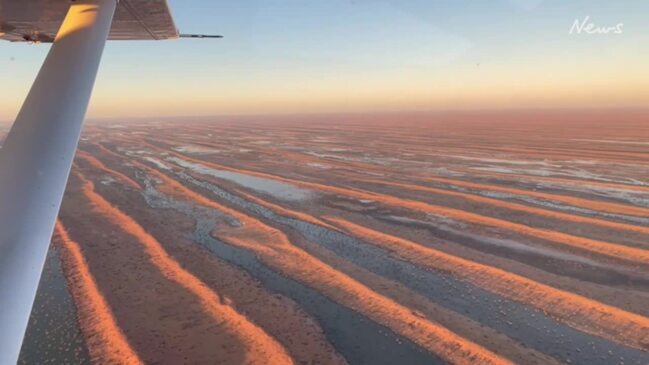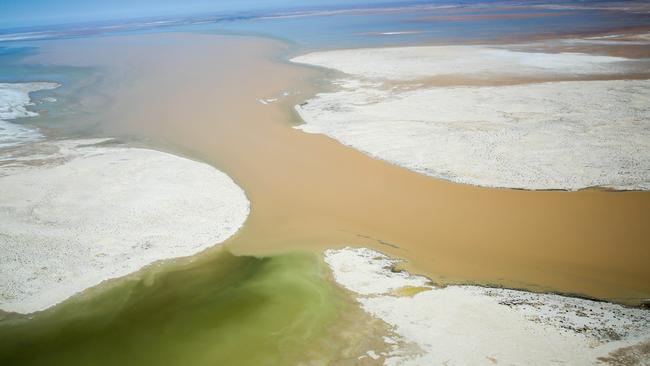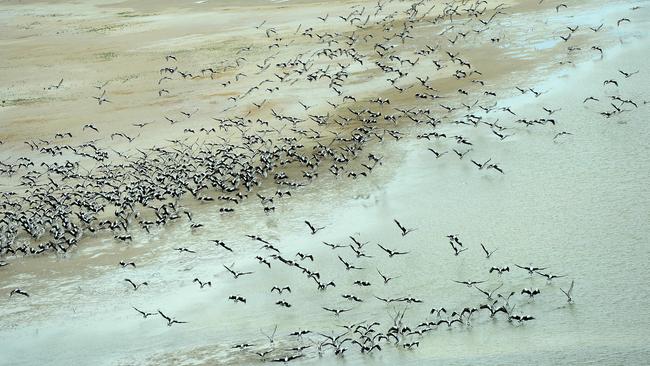Draft Lake Eyre management plan bars walking on site sacred in Aboriginal culture
A new national parks draft management plan says banning visitors from recreational access would be part of recognising it as a sacred site for traditional owners.

SA News
Don't miss out on the headlines from SA News. Followed categories will be added to My News.
Lake Eyre visitors would be banned from entering the lake bed on foot without permission under a draft management plan recognising the iconic attraction as “a special and sacred site” to Aboriginal people.
Recreational access to the lake bed would be banned at the popular Outback tourist attraction as part of the Kati Thanda-Lake Eyre National Park management plan, which was released for consultation on Friday.
Australia’s largest inland lake, at 9500 sqkm, Lake Eyre is world-renowned for spectacular flooding but fills an average of four times a century.
The new management plan is designed to “help traditional owners manage one of the Outback’s most popular attractions” by “preserving cultural significance and increasing visitor safety”.

National Parks and Wildlife Service national parks programs director Jason Irving said the state government recognised the lake was special and sacred to the Arabana people.
“The request for visitors not to enter a sacred cultural site is made in recognition and respect for Arabana culture and to ensure the safety of visitors,” he said.
“People are still encouraged to enjoy the park and view the spectacular lake bed from designated visitor areas or from the air.”
He said other recreational activities, including swimming, driving, boating and landing aircraft, were already restricted under National Parks legislation.
Arabana Aboriginal Corporation chairwoman Bronwyn Dodd said Kati Thanda was a very special place of cultural significance.
“We are proud to share this part of our country but we urge you to respect our Ularaka (stories), lore and culture and not enter the lake,” Ms Dodd said.
“We have a responsibility to look after the lake and, in turn, it looks after us. Preservation of this lake is also the preservation of our culture.”

Lake Eyre scenic flight operator Trevor Wright, also the William Creek Hotel owner, told The Advertiser the draft plan, if implemented, would have little impact.
Mr Wright, who established Wrightsair in 1992, said the draft plan formalised what had been “unofficially in action for the last 10 to 20 years”, mostly for safety reasons.
The lake bed had a very thin crust with crystallised gypsum “like broken panes of glass” underneath.
“Seriously, if you walk on it and you’re in thongs or anything else, you’ll cut your skin to smithereens and you’ll sink down to your knees. You don’t want kids doing that. They’ll end up with infections and you’ll have to call in the RFDS,” he said.
“What I see, and I’ve lived out there, it’s a commonsense approach of handling a really remote area tourist attraction, where people can still get the full value of it, enjoy it, and take heaps of photographs.
“But the other side of it is they’re kept in a safe, secure environment.”
More Coverage
Read related topics:Environment & Climate





